
NGC 7012 is a large, bright elliptical galaxy located about 380 million light-years away from Earth in the constellation Microscopium. NGC 7012 was discovered by astronomer John Herschel on July 1, 1834.
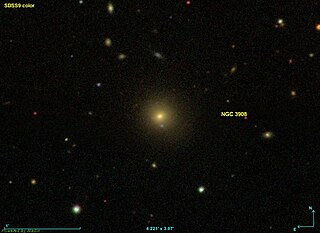
NGC 3908 is one of the furthest NGC objects. It is an elliptical galaxy located 1.2 billion light-years away in the Leo constellation with an estimated 280,000 thousand light-years across in diameter. It was discovered on April 10, 1885, by Lewis Swift, who found the object too faint for the naked eye to see. The identification of the celestial object observed by Swift is uncertain. The coordinates place it approximately 7.5 arcminutes south-southwest of a galaxy previously listed, potentially identifying it as PGC 36967. However, astronomers Corwin and Gottlieb argue that the object is much fainter than Swift's descriptions suggest, indicating it may have been too faint for him to observe. Although the right ascension aligns with another of Swift's discoveries on the same night, the discrepancy in declination is notably larger. It remains unclear if PGC 36967 is NGC 3908, and it is equally probable that Swift's observed object is "lost," with any nearby galaxy merely coincidental to Swift's original position. Due to its relatively large size, NGC 3908 is considered a brightest cluster galaxy, a BCG.
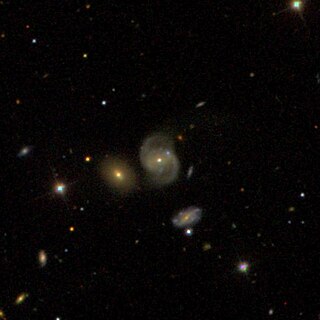
IC 4461 is a spiral galaxy located in the Boötes constellation, located at distance of 417 million light-years from both the Milky Way and Andromeda Galaxy.
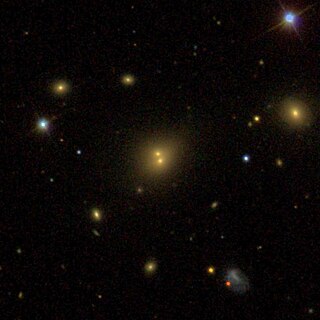
IC 3441 is a type ES-0 lenticular galaxy with a bar located 880 million light-years away from the Solar System in the constellation of Coma Berenices. IC 3441 was discovered on March 23, 1903, by the astronomer Max Wolf and it does not have an active galactic nucleus or an indication of star formation.
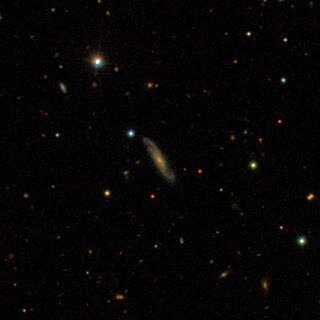
IC 3031 known as PGC 92941, is an edge-on spiral galaxy located in the Coma Berenices constellation. The galaxy lies 1.15 billion light-years away from the Solar System and has an estimated diameter of 240,000 light-years meaning it is bigger compared to the Milky Way. IC 3031 was discovered by astronomer Royal Harwood Frost on May 7, 1904.

IC 4017 is a type Sbc spiral galaxy with a bar located in Coma Berenices. It is located 2.3 billion light-years away and was discovered on January 27, 1904, by Max Wolf. At the redshift of 0.1773, IC 4017 is the most furthest object in the Index Catalogue and is said to be possibly interacting with its companion.

PGC 1470080 is a type E elliptical galaxy located in the Boötes constellation. It is located 3 billion light-years away from the Solar System and has a diameter of 571,000 light-years, making it a type-cD galaxy and one of the largest.

IC 1166 are a pair of galaxies in the Corona Borealis constellation comprising IC 1166 NED01 and IC 1166 NED02. They are located 977 million light-years from the Solar System and were discovered on July 28, 1892, by Stephane Javelle.

IC 1189 is a S0-a lenticular galaxy with a ring structure located in Hercules. It is located 557 million light-years away from the Solar System and has an approximate diameter of 145,000 light-years. IC 1189 was discovered on June 7, 1888, by Lewis Swift. It is a member of the Hercules Cluster.
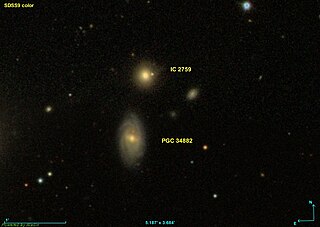
IC 2759 is a small type E elliptical galaxy located in the constellation of Leo. It is located 350 million light-years away from the Solar System and was discovered on April 24, 1897, by Guillaume Bigourdan. Sometimes IC 2759 is confused with the spiral galaxy, PGC 34882 which is located south of the galaxy.

IC 2816 known as PGC 3472124, is a type Sbc spiral galaxy with a ring structure located in the Leo constellation. It is located 878 million light-years from the Solar System and has apparent dimensions of 0.59 x 0.22 arcmin, meaning its diameter is 160,000 light-years across.

IC 4516 is a type E elliptical galaxy located in Boötes. Its redshift is 0.045618 which corresponds IC 4516 to be located 667 million light-years from Earth. The galaxy was discovered by Lewis Swift on June 2, 1898, which was his last discovery after spending half a century observing astronomical objects, starting with the observation of the Great Comet in 1843.

IC 3278 known as PGC 40345, is a large type SBbc spiral galaxy located in Coma Berenices. Its redshift is 0.093851, meaning IC 3278 is 1.29 billion light-years away from Earth, which given its apparent dimensions of 0.80 x 0.6 arcmin, means IC 3278 is 301,000 light-years across. The galaxy was discovered on March 23, 1903, by Max Wolf. Together with two lenticular galaxies, IC 3278 NED01 and IC 3278 NED02, they form a galaxy triplet bearing its same name. According to a study which was conducted by Takase and Miyauchi-Isobe, IC 3278 can be considered an ultraviolet-excess galaxy as it is detected on multi-color plates which was taken via a Kiso Schmidt telescope for 10 survey fields.

IC 4539 is a type SABb intermediate spiral galaxy located in Corona Borealis. Its redshift is 0.061307, which corresponds IC 4539 to be 845 million light-years from Earth. It has an apparent dimension of 0.40 x 0.4 arcmin, meaning the galaxy is about 95,000 light-years across. IC 4539 was discovered by Stephane Javelle on June 23, 1903, who found it "as faint, small, round with a very brighter middle."

IC 923 is a lenticular galaxy located in Ursa Major. Its redshift is 0.069243 which means the galaxy is 954 million light-years from Earth. IC 923 has apparent dimensions of 0.50 x 0.2 arcmin, meaning it is approximately 139,000 light-years across. IC 923 was discovered in June 1892, by Edward Emerson Barnard and is a member of galaxy group V1CG 588.

IC 4160, also known as PGC 1677859, is a spiral galaxy located in Coma Berenices. Its redshift is 0.061443, which corresponds IC 4160 to be 846 million light-years from Earth. It has an apparent dimension of 0.40 x 0.2 arcmin, meaning the galaxy is 99,000 light-years across. IC 4160 was discovered by Max Wolf on January 27, 1904.

IC 4481 is a type SBbc barred spiral galaxy located in Boötes. Its redshift is 0.110727, meaning IC 4481 is located 1.49 billion light-years away from Earth. It is one of the furthest objects in the Index Catalogue and has an apparent dimension of 0.30 x 0.2 [[Minute and second of arc|arcmin]. IC 4481 was discovered on May 10, 1904, by Royal Harwood Frost, who found it "faint, very small, round and diffuse".

IC 3389 is an elliptical galaxy located in Coma Berenices. Its redshift is 0.126648, which means IC 3389 is 1.74 billion light years away from Earth. It is the third most distant object in the Index Catalogue. IC 3389 has apparent dimensions of 0.20 x 0.2 arcmin, meaning the galaxy is 102,000 light-years across. It was discovered by Max Wolf on March 23, 1903.

IC 3447 is a type Sc barred spiral galaxy located in the constellation Virgo. It has a redshift of 0.092479, which means IC 3447 is 1.27 billion light-years from Earth, making it one of the furthest objects in the Index Catalogue. The galaxy has apparent dimensions of 0.30 x 0.3 arcmin, which means IC 3447 is 111,000 light-years across. It was discovered by Royal Harwood Frost on May 10, 1904.
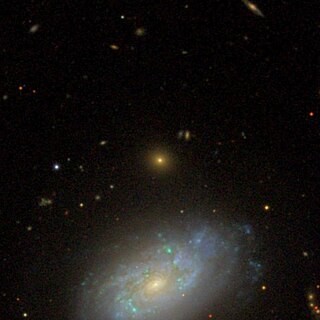
NGC 3950 is an elliptical galaxy of type E, in Ursa Major. Its redshift is 0.074602, meaning NGC 3950 is 1.03 billion light-years or 316 Mpc from Earth, which is within the Hubble distance values. This high redshift makes NGC 3950 one of the furthest New General Catalogue objects.




















